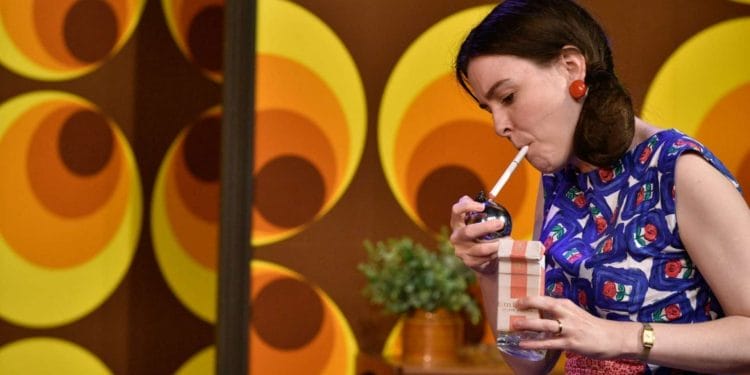 You’d be forgiven for assuming that Abigail’s Party has been running in London since it first premiered in 1977. Thanks to the televised film version of Mike Leigh’s play, starring all but one of the original cast, which has permeated the public consciousness to the extent that it has become a kind of theatrical time capsule.
You’d be forgiven for assuming that Abigail’s Party has been running in London since it first premiered in 1977. Thanks to the televised film version of Mike Leigh’s play, starring all but one of the original cast, which has permeated the public consciousness to the extent that it has become a kind of theatrical time capsule.
Often seen as the very definition of society in the seventies, Abigail’s Party is very much rooted in that decade, but retains themes that are perhaps even more relevant today. Thanks to some nifty staging, walking into the auditorium feels like you’re arriving at Beverly and Laurence’s suburban home, the sixth guest at this fateful soiree.
Beth Colley’s authentic set design is an explosion of brown and orange, a silver plated candelabra the centrepiece on a wall unit of tacky objet d’art and leatherbound books. Even the labels on the spirits bottles have been recreated to match the time period. It’s difficult to imagine how this was ever deemed fashionable, but at the time it was the must have look.
Social climbing is, of course, at the heart of Abigail’s Party, Beverly and Laurence are aspiring to be middle class, as are their new neighbours, Angela and Tony. The only one of the guests who is actually middle class is Sue, who spends the evening in constant, but polite disdain.
The titular Abigail is never seen, her teenage party is next door and we can assume that’s where the most fun is being had. The hosts have invited newcomers Angela and Tony round for drinks, supposedly to welcome them to the street, but we’re left wondering if Beverly’s real intention was simply to show off.
This comedy of class and manners sees the evening rapidly deteriorate, the strain on Beverly and Laurence’s marriage more that apparent, especially when Beverly’s flirtations to Tony accelerate. Maintaining it’s foot in the seventies, the audience chuckle along knowingly to indicators of the era, such as the revelation that Angela and Tony bought their house for £21,000.
Some of the more outdated references are met with a colder audience response, like the wallpaper, these are not things people find appealing any longer. But they remain in the script to remind us of the gender imbalance of the time.
Kellie Shirley delights the audience as Beverly, owning the stage with a confident swagger that puts the character firmly in control of proceedings. Ryan Early as Laurence embraces the comedy aspect of the role, slowly building up the frustration and anger that eventually leads to the play’s devastating climax.
Matt Di Angelo’s quiet and brooding Tony is a joy to watch, particularly when it comes to those couple of scenes where the mask slips and Di Angelo grips the audience in his transformation. Emma Noakes’ portrayal of Angela is bright and bubbly in contrast to Barbara D’Alterio’s composed, though uneasy, Sue.
With a classic like Abigail’s Party it’s difficult to get it wrong, but just as challenging to bring together a production that stands out from those that have come before it. Here, director Vivienne Garnett succeeds in making this delightful tragi-comedy feel like a brand new play, while being as familiar as cheese and pineapple on sticks.
Abigail’s Party is at Park90 until 4th December 2021.























Comments 1